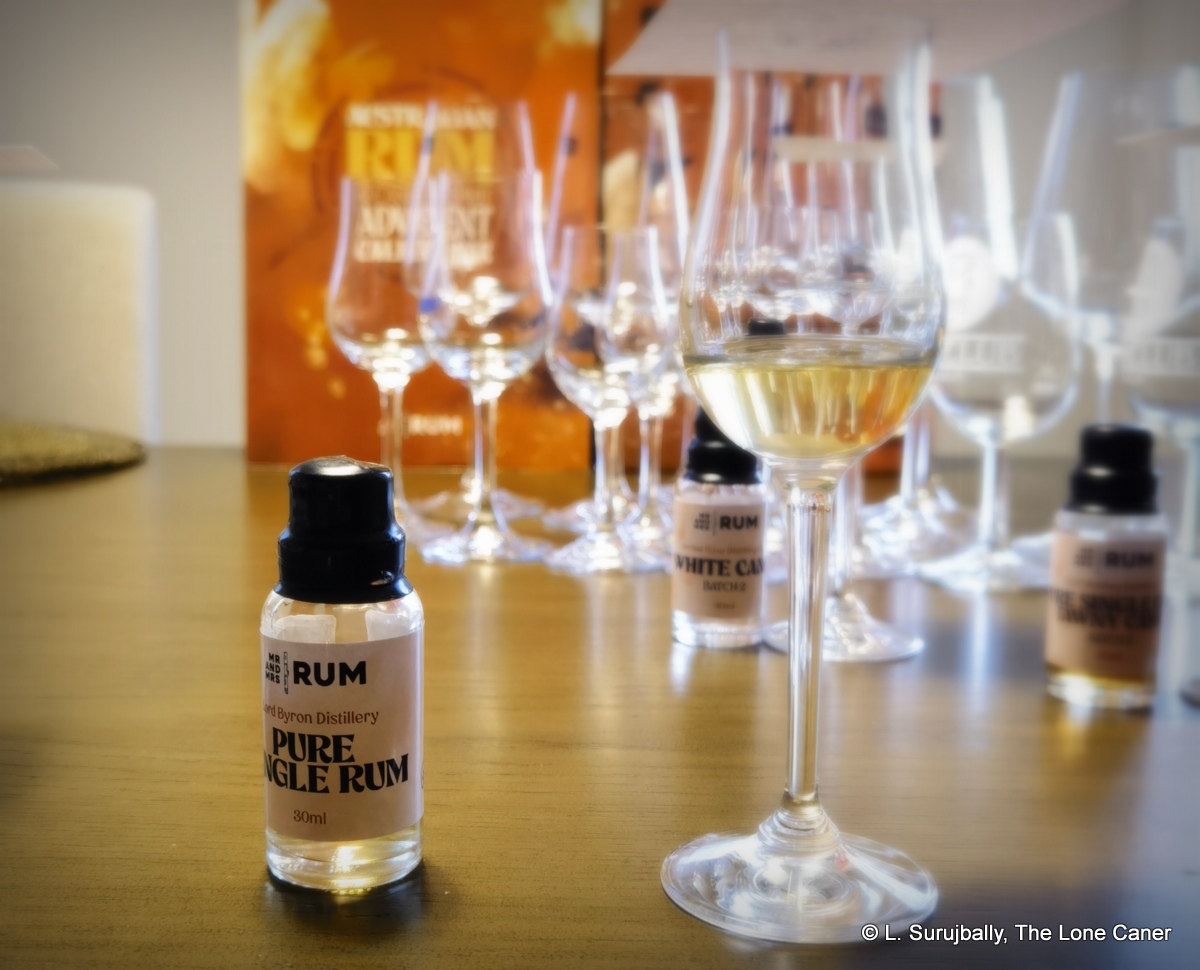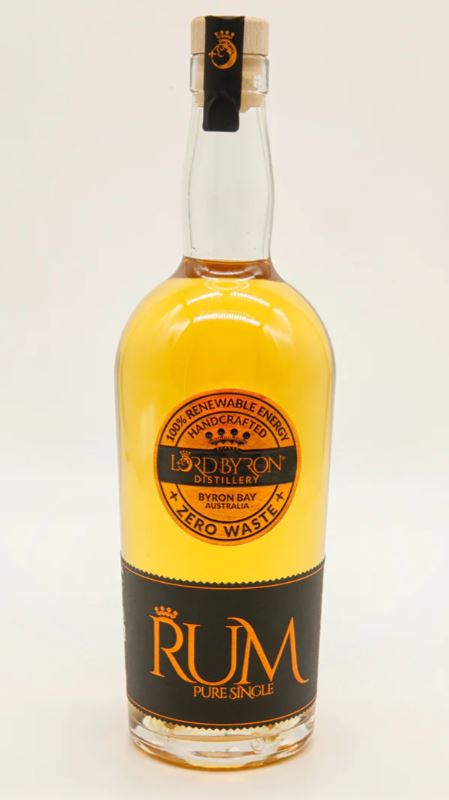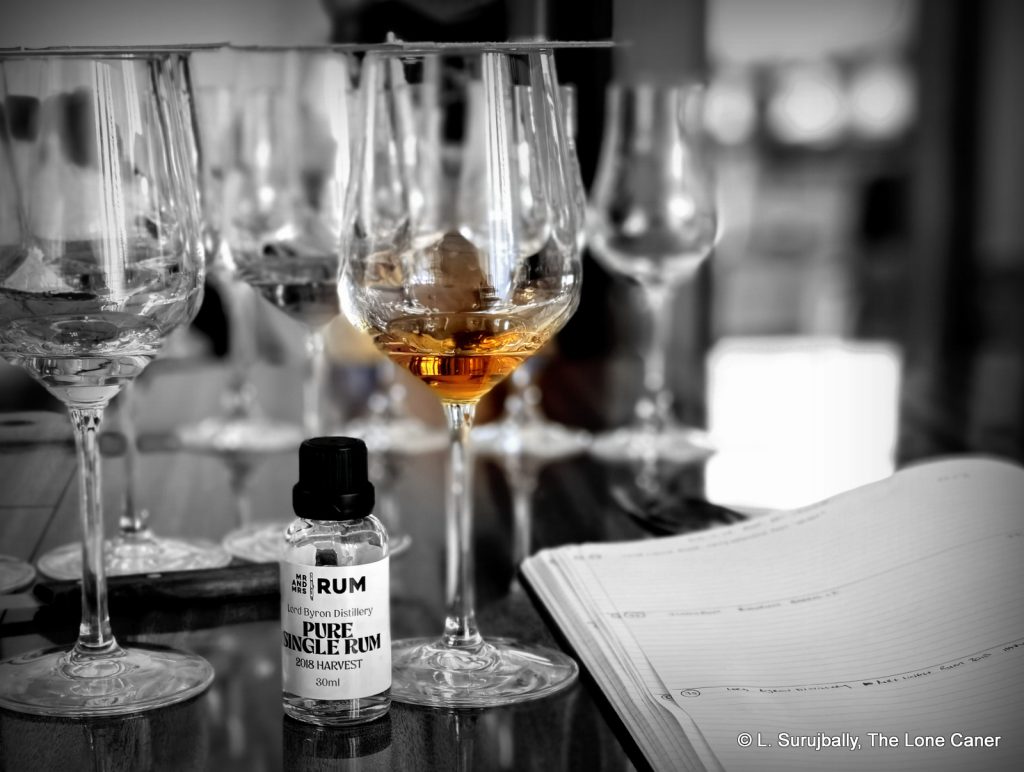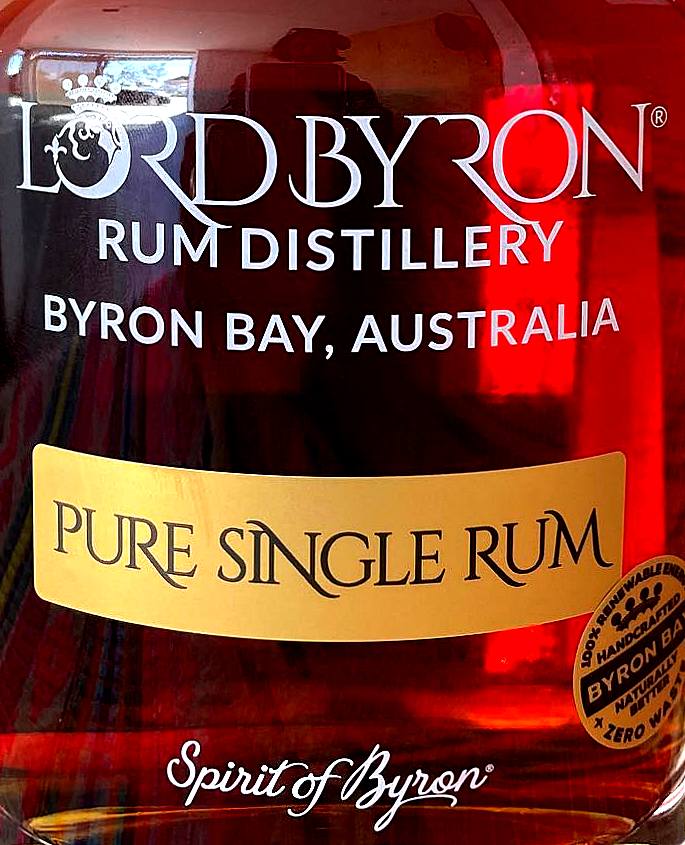We’ve met this distillery before, a mere hundred reviews or so ago. Founded by the husband and wife team of Brian and Helen Restall in 2016, they have slowly built quite a repertoire of spirits (he likes dark ones, she prefers light so maybe there’s some kind of Jack Sprat vibe going on here) – standard rums, white ones, spiced ones, the 2021 release of the 2-3 YO 55.5% Pure Single Rum I enjoyed and a brutal 63% “fire cane” I really want to try, plus gin, falernum, limoncello and vodka, which covers the bases nicely.
So here they are again, with a somewhat offbeat take on the Pure Single Rum, if not as strong. Because the background of the company is covered in that original review, I won’t rehash it here, except to note that the columnar still I mentioned then – 380L and six plates — has a name: Alba, which was the initial name of Lord Byron’s illegitimate daughter before he renamed her Allegra. I enjoy these little winks that distillers make to some interesting aspect of their past or something that interests them, in the naming of their still, truly.
Anyway, about the rum: molasses based, using distiller’s yeast on a wash left for seven days in closed stainless vessels, then run through the two copper alembics (it’s double distilled), then matured a minimum of three years in ex-bourbon barrels sourced from Woodford Reserve – which if shy they can call it rum, and not a cane spirit. Of course, bearing in mind the sustainable, ecologically-friendly, zero-waste nature of their operation and commitment to making pure rums, it’s not chill filtered and additive free.
This is a rum that channels one of the more peculiar olfactory profiles I’ve yet come across- it reminds me something of some Japanese rums, especially kokuto shochus. It opens with an odd sort of earthy, mouldy, damp cellar aroma, and of wet, much-worn leather boots. Brine, olives and a vegetable soup with “plenty obstacles” and a fiery pimento for kick. There’s a sense of wet paint slapped onto decaying drywall, the bitter tang of roasting chestnuts (which I never cared for myself), plastic sheeting, and only at the end when all seems over and done with, do the shy tangy notes of ripe fruit emerge, some green apples, grapes, pears, that kind of thing. It’s an unusual nose and I’m unsure how well it would work at a heftier proof point, though I would have liked to see that one a bit more, I think – a lot of subtlety gets missed out on that, say, 43% or 46% might have shown off better.
This observation is apropos for the palate as well, which is quite crisp: and while not exactly clear or clean, is close enough not to offend while still being rather too mild for everything it apparently stuffs in its jock. It channels a hot, almost sour and spicy Thai Tom Yum soup with no shortage of lemongrass, salted butter melting in a pan, with olive oil and toasted rye bread coming behind that. Again the fruits take something of a back seat and only start becoming noticeable after the rum opens up, and even then there’s not a whole lot that one can easily pick out: lemon peel, fresh peaches, pears, some watermelon, more or less. But it does meld nicely into the whole, some of the dirty notes from the nose are absent, and the finish concludes things well: short, sharp, reasonably flavourful, all of it fading fast and acting like it just wants to bail.
Strictly speaking this is not my dram of grog. I’m not won over by the loamy and earthy notes at the beginning (the official site entry refers to “bourbon corn” as a tasting note) and aspects of the nose in particular don’t work for me; plus, as always, I have my issues with standard strength – it makes everything too mild which even a few additional points of proof might have showcased more effectively. Yet I can’t fault it for that, only admire the courage it must have taken to release the rum as it is, knowing it is something at right angles to more established profiles. So to conclude, Lord Byron’s rum showcases rather more potential than the sort of intense quality sported by the 55% 2018 Pure Single Rum they did before, and would seem to be aimed at the more easy going supermarket crowd who prefer more demure fare. The furious taste profile attendant on something stronger is missing, and the tastes will not be in everyone’s comfort zone: yet underneath all that, we see a much better rum is waiting to be appreciated, and now, having written my opinion, I think I’ll go back and try my sample a few more times. Let’s see if, after a few more hours, it delivers more concretely on what it promises.
Have a good weekend!
(#1056)(78/100) ⭐⭐⭐
Other Notes
- From the 2023 Australian Advent Calendar, Day 13



